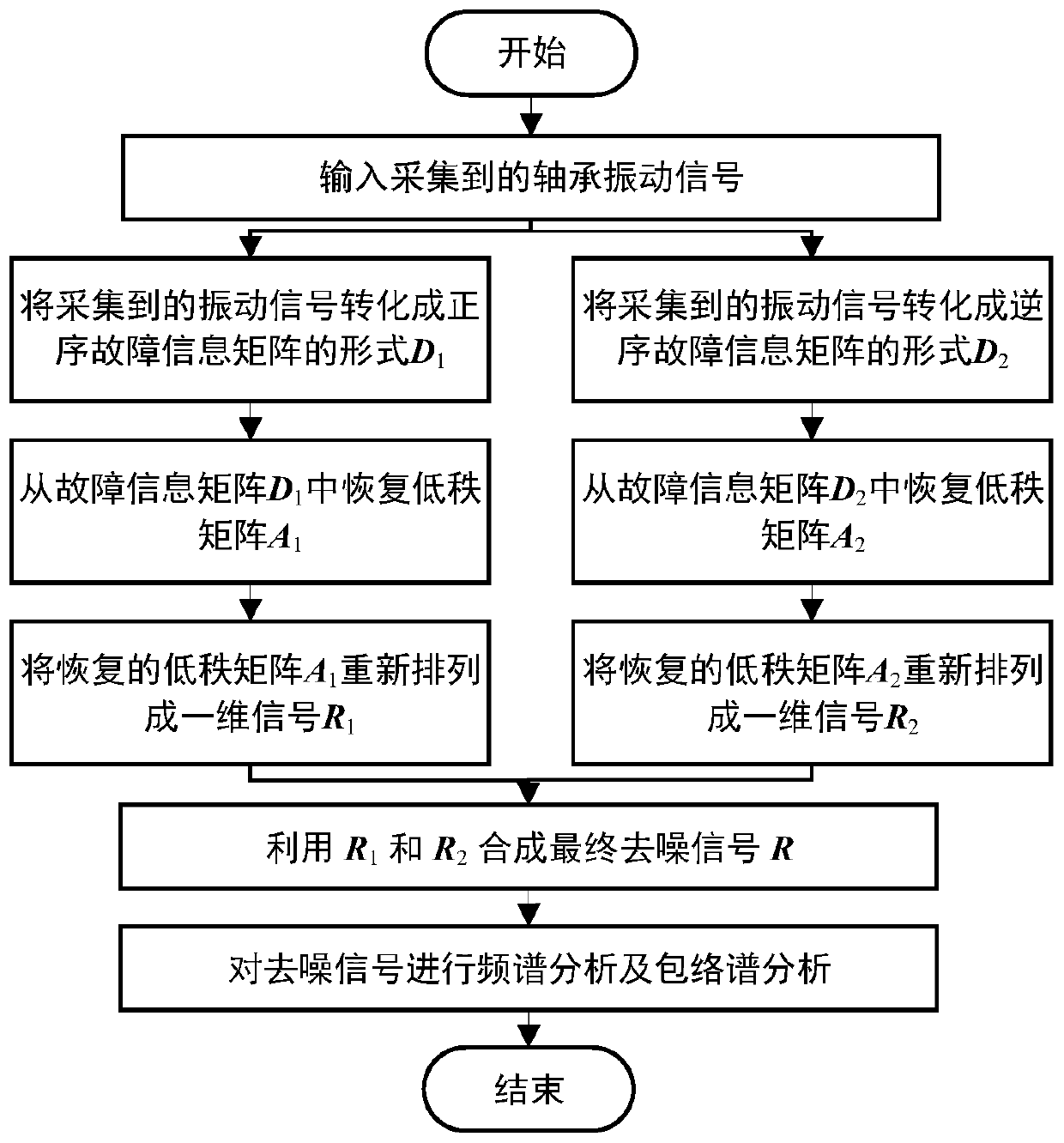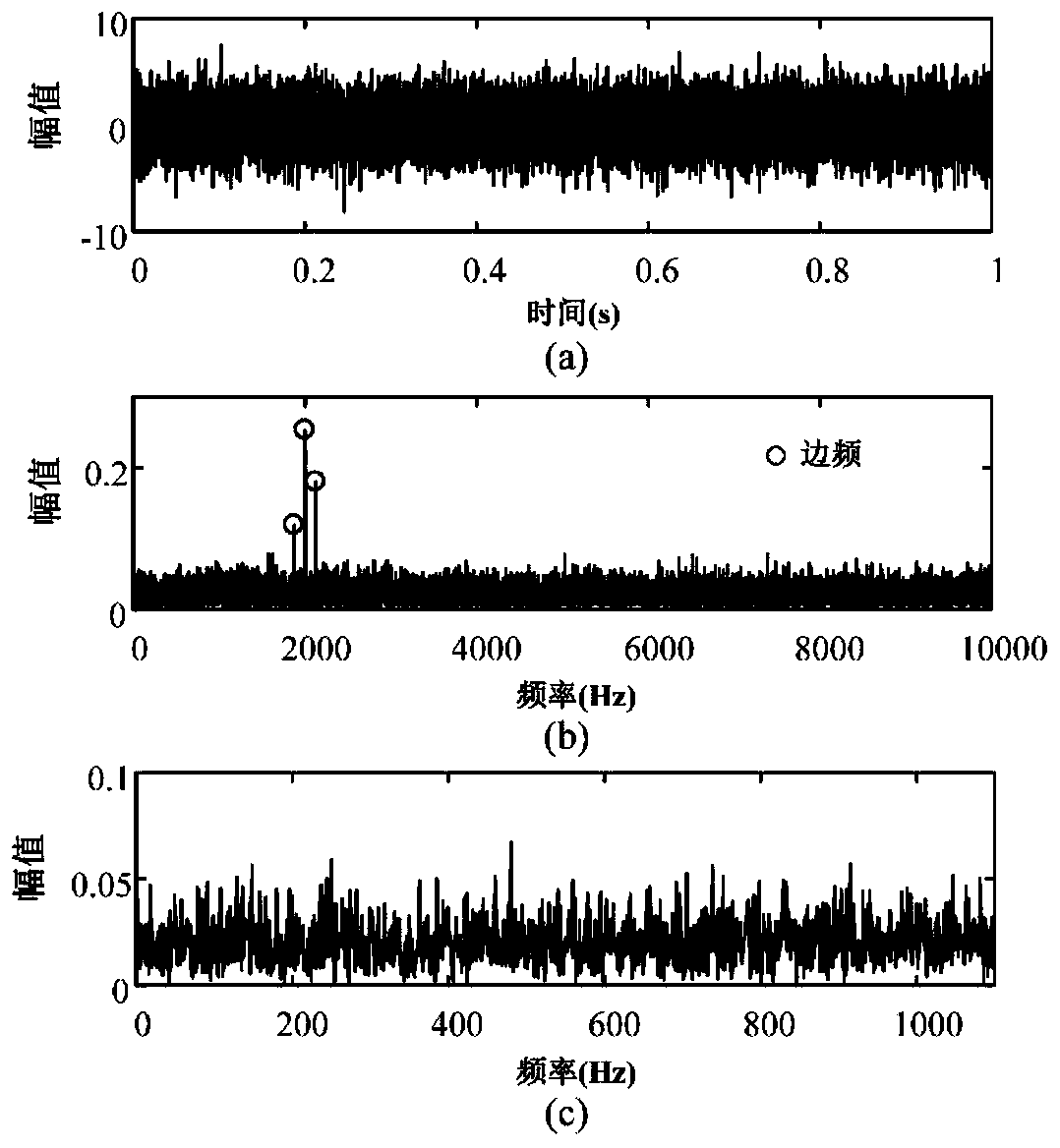Reinforcement Method for Weak Faults of Rolling Bearings Based on Matrix Restoration
A matrix recovery and rolling bearing technology, applied in the testing of mechanical components, pattern recognition in signals, testing of machine/structural components, etc., can solve problems such as no solution algorithm, achieve enhanced fault characteristics, high calculation efficiency, and set parameters little effect
- Summary
- Abstract
- Description
- Claims
- Application Information
AI Technical Summary
Problems solved by technology
Method used
Image
Examples
Embodiment Construction
[0047] This embodiment proves the effectiveness of the method proposed in this patent by setting up simulation cases and experimental cases.
[0048] 1. Simulation case
[0049] In the simulation case, the bearing fault simulation signal is constructed by the following formula:
[0050]
[0051] In the formula: A m =0.9 is the maximum magnitude of the mth impact, β 1 =380 is the damping attenuation coefficient, ω n1 = 2048Hz is the assumed bearing fault frequency, T b Indicates the time interval between two adjacent impacts, δT indicates the error in the time interval between two adjacent impacts caused by slippage, and its value is 1-2%T b , μ(t) is the unit switching function. Assume that the bearing outer ring has a fault, the fault frequency is 125Hz, the signal sampling frequency is 20kHz, and the sampling time is 1s. The background noise interference is simulated by adding Gaussian white noise with a signal-to-noise ratio of -17db. The time-domain waveform of th...
PUM
 Login to View More
Login to View More Abstract
Description
Claims
Application Information
 Login to View More
Login to View More - R&D
- Intellectual Property
- Life Sciences
- Materials
- Tech Scout
- Unparalleled Data Quality
- Higher Quality Content
- 60% Fewer Hallucinations
Browse by: Latest US Patents, China's latest patents, Technical Efficacy Thesaurus, Application Domain, Technology Topic, Popular Technical Reports.
© 2025 PatSnap. All rights reserved.Legal|Privacy policy|Modern Slavery Act Transparency Statement|Sitemap|About US| Contact US: help@patsnap.com



